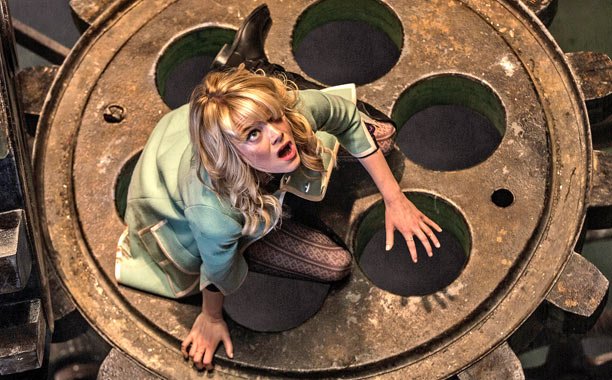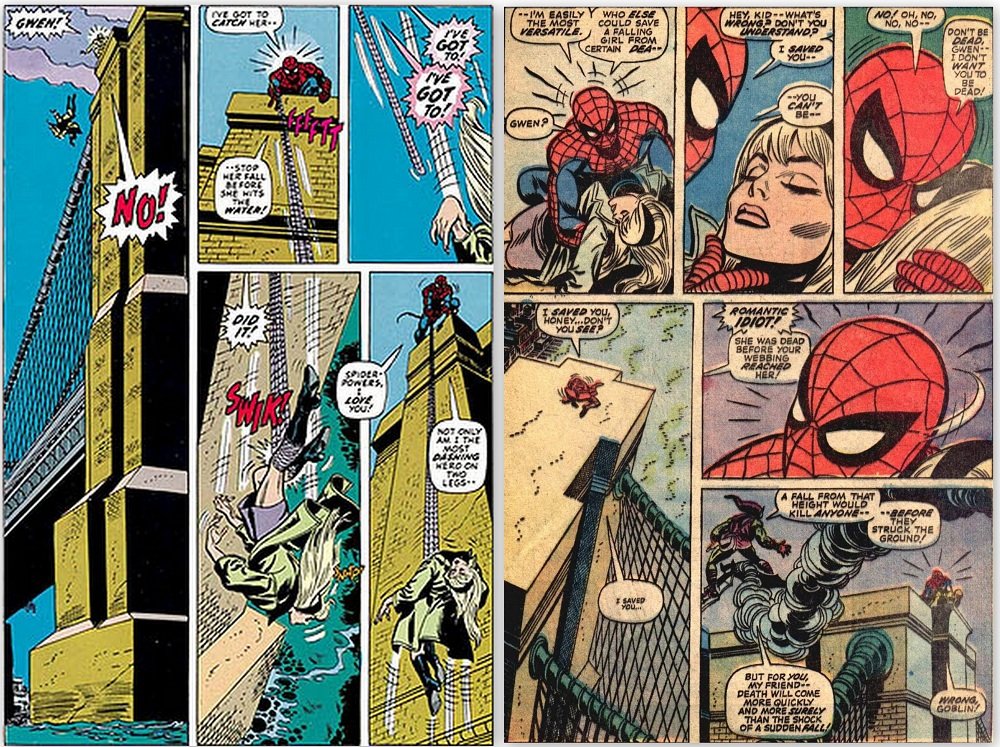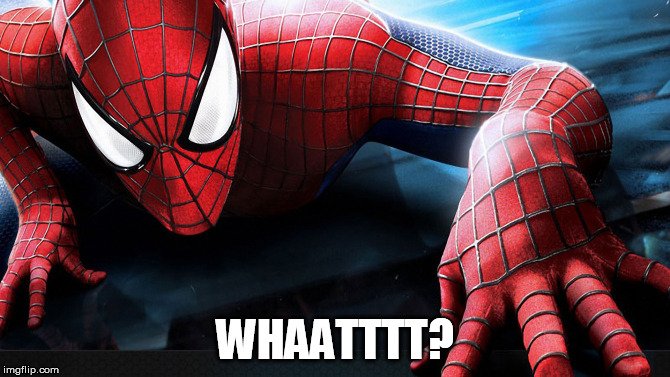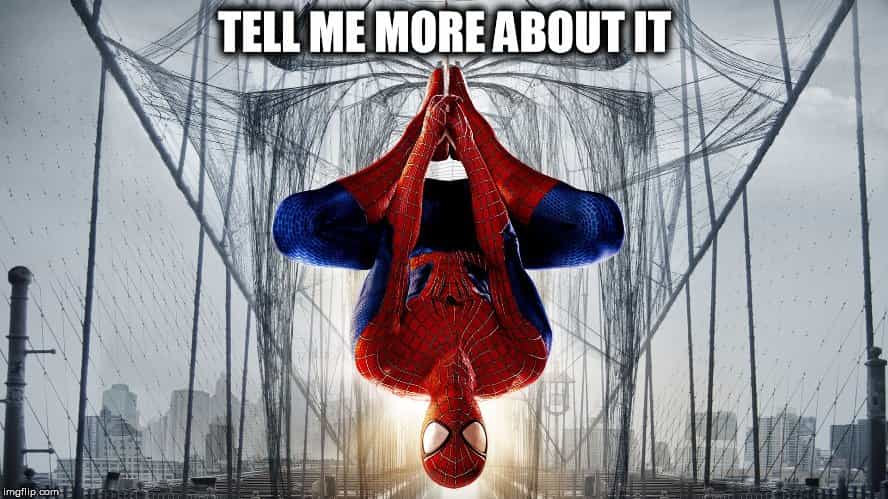No, Spiderman could not have saved her.
Gwen Stacy was falling at a high speed and Spiderman’s webbing reached her just as she was about to hit the ground He didn’t have much time at his disposal to make her stop, even after he dove down immediately to catch her (as shown in the movie).
“With great power comes great responsibility.”
Although the maxim applies to every superhero, it can be safely remarked that there are some superheroes who have paid heavier prices than others in terms of losses of their loved ones. Spiderman stands right at the top of the list of such superheroes. He lost his girlfriend, Gwen Stacy, when she from a tall building after being knocked off by Green Goblin, Spiderman’s arch enemy. It was a tragic moment, particularly to the superhero’s steadfast fans.

However, did she really die due to hitting the ground? Is it possible that Spiderman himself (obviously, quite unwittingly) contributed to her death?
Let’s look at what science has to say on this controversial cinematic matter!
What Exactly Are We Talking About?
For the uninitiated, I should begin by explaining that there have been two different sets of Spiderman movies made by Marvel Enterprises. We’re going to talk about the second set of Spiderman movies, i.e. The Amazing Spiderman series. So far, they have produced two movies in the series; we’re going to discuss a specific, extremely important event in the second movie (The Amazing Spiderman 2).
We’re going to look at how Gwen Stacy died, and then try to scientifically analyze if there was something that Spiderman could have done to prevent the fateful result.
Also Read: Can You Really Crawl Like Spiderman In Real Life?
The Death Of Gwen Stacy: How Did It Happen?
In The Movie
The scene goes like this: Spiderman and Green Goblin get in a fight that rages, as usual, over rooftops and through glass windows. In this particular scuffle though, they end up atop a clock tower where Green Goblin, although not directly, causes Gwen Stacy to fall off, plunging to her death. Spiderman immediately shoots his web to catch her, which it does, but just at she hits the ground. A distinct ‘thud’ is also heard, implying that she hit the ground before the web was able to catch her.
In The Comic

In The Amazing Spiderman #121 edition, Green Goblin knocks her off of a bridge. As she falls, Spiderman catches her in his webbing, and consequently, she doesn’t hit the water. However, just as her free fall is abruptly stopped by the webbing, there is a ‘snap’, indicating that Gwen’s neck has been broken.
Falling From A Height: Why Is It So Deadly?
Why is it that people (not afflicted by an mental ailment) are so scared of falling from great heights? It may seem pretty obvious at first, but take a moment and think about it. What actually happens when someone falls off from a tall structure and hits the ground (or the surface of water)?

When you’re falling through the air, you are moving at a high velocity towards the ground. As you hit the ground, your velocity reduces from a very high value to zero in a matter of a few milliseconds. The impact exerts a tremendous force on your entire body that is equivalent to a force many times the weight of your own body. That’s where the problem lies.
To calculate Gwen’s velocity when Spidey’s webbing catches her, we can use the expression below.
 where g is acceleration due to gravity (9.8 meters per second squared), ‘h’ is the height through which she has fallen already (say, 300 feet or 92 meters) and ‘v’ is her velocity. Putting all these values in the equation, her speed turns out to be 95 miles per hour (150 kilometers per hour).
where g is acceleration due to gravity (9.8 meters per second squared), ‘h’ is the height through which she has fallen already (say, 300 feet or 92 meters) and ‘v’ is her velocity. Putting all these values in the equation, her speed turns out to be 95 miles per hour (150 kilometers per hour).
Now, we need to use another equation – Newton’s second law of motion – to calculate the force required by the webbing to bring her to rest, i.e. reduce the velocity from 95 mph to 0 mph.
 Assuming that Gwen weighs 110 pounds (50 kilograms), she is falling through the air at 95 mph, and the webbing brings her down to rest in, say, 0.5 seconds. Given those variables, what is the force exerted on her body? How much force does she feel?
Assuming that Gwen weighs 110 pounds (50 kilograms), she is falling through the air at 95 mph, and the webbing brings her down to rest in, say, 0.5 seconds. Given those variables, what is the force exerted on her body? How much force does she feel?
An enormous amount! In fact, the force she experiences is almost 10 times the weight of her own body. The result of such a great force on her body in a span of 0.5 seconds results, quite unsurprisingly, in the ‘snap’ of her neck. This is the reason why bungee jumpers allow a sufficient distance so that their stretching cord can stretch adequately; by doing this, they ensure that they don’t experience a heavy rebound force in only a few milliseconds; rather, that force is distributed over a longer period of time.
How Did Spiderman (Unwittingly) Contribute To Gwen’s Death?

The whole danger of falling from such a great height is coming to halt in a very short span of time, thereby throwing all the internal organs into disarray and causing fatal injuries due to the enormous force. That’s why so many suicide victims that jump into rivers and canals do not die from drowning, but rather due to breaking their necks.
It seems insanely crazy to think that Spiderman might have contributed to Gwen’s death, but if seen from a scientific perspective, he might have.
Catching her in his webbing and effectively bringing her to an abrupt stop wouldn’t have made of much of a difference, as she still experienced a great deal of force when her free fall stopped suddenly due to the pull of the webbing. His webbing is flexible, which is a good thing, but there was simply not enough time for the webbing to elongate and distribute the impact over more than a few milliseconds, which would have given Gwen a chance to survive the fall.
Also Read: Can Spiderman Really Stop A Train With His Web?
Could Spiderman Have Saved Her?

On normal occasions, when he had more time than in that case, he could have slowed the free fall of the victim by grabbing them in his webbing, grabbing them in mid-air, and then swinging to safety, thus spreading the force over many seconds, even minutes.
However, considering that she was falling at a high speed and his webbing reached her just as she was about to hit the ground, Spiderman didn’t have much time at his disposal to make her stop, even after he dove down immediately to catch her (as shown in the movie).
Even according to science, it was simply not Spidey’s day.
He seemed to have learnt from this episode and later, in one particular edition of the comic, he is shown to save a guy falling from a building in exactly the same way – Spidey slows the man’s fall with his webbing, catches him, and then swings along with him to safety! Take a look at this clip from Spiderman 3, where Spidey saves a girl in exactly the same fashion; catching her first and then swinging to safety.
This is what a real superhero teaches us to do; even when you fail, learn from your mistakes, stand up and fight back!
How well do you understand the article above!

